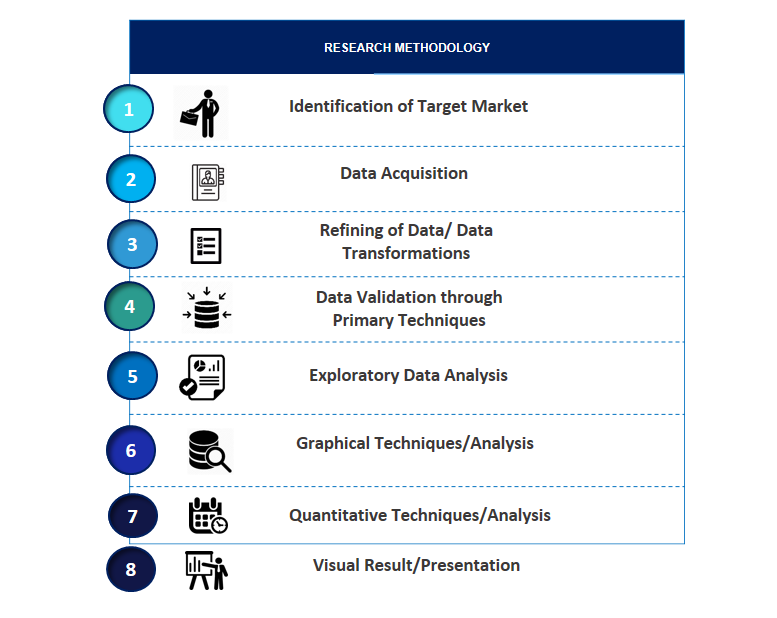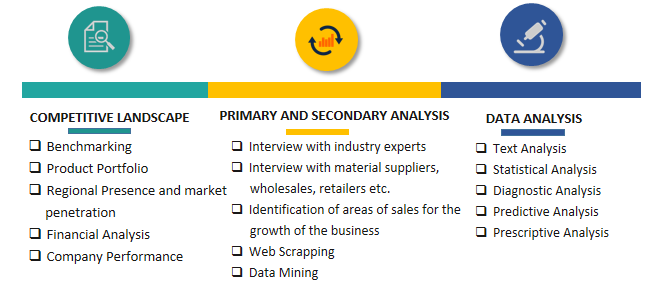North America Coaxial Cable Market Introduction and Overview
According to SPER Market Research, the North America Coaxial Cable Market is estimated to reach USD 5873.59 million by 2033 with a CAGR 8.64%.
The report includes an in-depth analysis of the North America Coaxial Cable Market, including market size and trends, product mix, distribution channels, and supplier analysis. Radio frequency and data transmission across distribution networks are accomplished via coaxial cable. An insulating layer envelops the inner conductor of coaxial cable, also known as coax, which is encircled by a tabular conducting shield. This design aids in the coaxial cable's ability to shield the signal it is carrying from outside electromagnetic interference. The military, aerospace, telephone service providers, and cable television sectors are the main users of coaxial cable.
- In a variety of fields, including cybersecurity, telecom infrastructure technology, technology for film and television, and more, Belden Inc. has completed eight acquisitions and one investment.
- Belden Inc. purchased Thinklogical in May 2017. Thinklogical is a creative producer of KVM signal extension and switching systems and secure, high-performance video distribution (VDS) that enables enterprises to more easily access and transmit video-rich data for greater productivity and efficiency.
Market Opportunities and Challenges
Opportunities: Over the course of the forecast period, the growing popularity of connected home devices is anticipated to propel the growth of the coaxial cable market in North America. The industry standard for distributing high definition television and high capacity internet throughout the home is a coaxial home network. An analysis by Coherent Market Insights indicates that more than 90% of American homes utilize coaxial cable networks to share images, videos, and browse the internet. The expectation is that this trend will persist throughout the forecast period due to the ongoing progress in coaxial cable and associated equipment to meet household demands for high-speed broadband. Additionally, it is anticipated that the growing ubiquity of smart home appliances would increase the need for coaxial connections.
Challenges: The projected timeframe for the North American coaxial cable market suggests that growth may be constrained by the high cost of raw materials. The regular fluctuations in raw material prices represent a significant impediment. Raw material costs for copper, aluminum, and polymers have risen significantly during the last five years. For manufacturers, this has meant a smaller profit margin. From the start of the year to the end of 2012, copper prices rose by 6%. Polyvinyl chloride (PVC) and fluorinated ethylene-propylene (FEP) are two examples of insulating materials whose costs have gone up recently.
Market Competitive Landscape
The Coaxial Cable market in North America is moderately fragmented. Some of the market companies are L-Com Global Connectivity, LS Cable, Southwire, TE Connectivity Ltd, Belden Inc, Alpha Wire, General Cable Corporation, Nexans S.A, Amphenol Corporation, Coleman Cable Inc., Others.
Scope of the Report:
| Report Metric | Details |
| Market size available for years | 2020-2033 |
| Base year considered | 2023 |
| Forecast period | 2024-2033 |
| Segments covered | By Cable Type, By Application, By End User
|
| Regions covered | Canada, Mexico, United States.
|
| Companies Covered | Belden Inc, Alpha Wire, General Cable Corporation, L-Com Global Connectivity, LS Cable, Southwire, TE Connectivity Ltd, Nexans S.A, Amphenol Corporation, Coleman Cable Inc. and Others.
|
COVID-19 Impact on North America Coaxial Cable Market
The COVID-19 outbreak caused a great deal of disruption and change in the coaxial cable market in North America. Because of lockdowns, manpower shortages, and limitations on non-essential company operations, the outbreak initially caused significant delays in manufacturing and supply chains. This led to a brief stop in manufacturing and a deceleration in the distribution of coaxial cables. Additionally, the unpredictability of the economy resulted in less investments and postponed projects, especially in industries like broadcasting and telecommunications that rely largely on coaxial cables.
Key Target Audience:
- Telecommunications Providers
- Cable Television Operators
- Internet Service Providers (ISPs)
- Broadcast Media Companies
- Data Centers
- Consumer Electronics Manufacturers
Our in-depth analysis of the North America Coaxial Cable Market includes the following segments:
|
By Cable Type:
|
Hardline
RG-6
Triaxial cable
Radiating
Others
|
|
By Application:
|
Video Distribution
Internet Data Transfer
Radio Frequency Transfer
|
|
By End User:
|
Cable Television Industry
Military and Aerospace
Internet Service Providers
Telephone Network Operators
Communication Equipment Manufactures
Others
|
Key Topics Covered in the Report:
- North America Coaxial Cable Market Size (FY’2024-FY’2033)
- Overview of North America Coaxial Cable Market
- Segmentation of North America Coaxial Cable Market By Cable Type (Hardline, RG-6, Triaxial cable, Radiating, Others)
- Segmentation of North America Coaxial Cable Market By Application (Video Distribution, Internet Data Transfer, Radio Frequency Transfer)
- Segmentation of North America Coaxial Cable Market By End User (Cable Television Industry, Military and Aerospacrnet Service Providers, Telephone Network Operators, Communication Equipment Manufactures, Others)
- Expansion Analysis of North America Coaxial Cable Market
- Problems and Obstacles in North America Coaxial Cable Market
- Competitive Landscape in the North America Coaxial Cable Market
- Impact of COVID-19 and Demonetization on North America Coaxial Cable Market
- Details on Current Investment in North America Coaxial Cable Market
- Competitive Analysis of North America Coaxial Cable Market
- Prominent Players in the North America Coaxial Cable Market
- SWOT Analysis of North America Coaxial Cable Market
- North America Coaxial Cable Market Future Outlook and Projections (FY’2024-FY’2033)
- Recommendations from Analyst
1. Introduction
1.1. Scope of the report
1.2. Market segment analysis
2. Research Methodology
2.1. Research data source
2.1.1. Secondary Data
2.1.2. Primary Data
2.1.3. SPER’s internal database
2.1.4. Premium insight from KOL’s
2.2. Market size estimation
2.2.1. Top-down and Bottom-up approach
2.3. Data triangulation
3. Executive Summary
4. Market Dynamics
4.1. Driver, Restraint, Opportunity and Challenges analysis
4.1.1. Drivers
4.1.2. Restraints
4.1.3. Opportunities
4.1.4. Challenges
4.2. COVID-19 Impacts of the North America Coaxial Cable Market
5. Market variable and outlook
5.1. SWOT Analysis
5.1.1. Strengths
5.1.2. Weaknesses
5.1.3. Opportunities
5.1.4. Threats
5.2. PESTEL Analysis
5.2.1. Political Landscape
5.2.2. Economic Landscape
5.2.3. Social Landscape
5.2.4. Technological Landscape
5.2.5. Environmental Landscape
5.2.6. Legal Landscape
5.3. PORTER’s Five Forces
5.3.1. Bargaining power of suppliers
5.3.2. Bargaining power of buyers
5.3.3. Threat of Substitute
5.3.4. Threat of new entrant
5.3.5. Competitive rivalry
5.4. Heat Map Analysis
6. Competitive Landscape
6.1. North America Coaxial Cable Market Manufacturing Base Distribution, Sales Area, Product Type
6.2. Mergers & Acquisitions, Partnerships, Product Launch, and Collaboration in North America Coaxial Cable Market
7. North America Coaxial Cable Market, By Cable Type (USD Million) 2020-2033
7.1. North America Coaxial Cable Market Size, Share and Forecast, By Cable Type, 2020-2026
7.2. North America Coaxial Cable Market Size, Share and Forecast, By Cable Type, 2027-2033
7.3. Hardline
7.4. RG-6
7.5. Triaxial cable
7.6. Radiating
7.7. Others
8. North America Coaxial Cable Market, By Application (USD Million) 2020-2033
8.1. North America Coaxial Cable Market Size, Share and Forecast, By Application, 2020-2026
8.2. North America Coaxial Cable Market Size, Share and Forecast, By Application, 2027-2033
8.3. Video Distribution
8.4. Internet Data Transfer
8.5. Radio Frequency Transfer
9. North America Coaxial Cable Market, By End User (USD Million) 2020-2033
9.1. North America Coaxial Cable Market Size, Share and Forecast, By End User, 2020-2026
9.2. North America Coaxial Cable Market Size, Share and Forecast, End User, 2027-2033
9.3. Cable Television Industry
9.4. Military and Aerospace
9.5. Internet Service Providers
9.6. Telephone Network Operators
9.7. Communication Equipment Manufactures
9.8. Others
10. North America Coaxial Cable Market Forecast, 2020-2033 (USD Million)
10.1. North America Coaxial Cable Market Size and Market Share
11. North America Coaxial Cable Market, By Region, 2020-2033 (USD Million)
11.1. North America Coaxial Cable Market Size and Market Share By Region (2020-2026)
11.2. North America Coaxial Cable Market Size and Market Share By Region (2027-2033)
11.3. Canada
11.4. Mexico
11.5. United States
12. Company Profile
12.1. Belden Inc
12.1.1. Company details
12.1.2. Financial outlook
12.1.3. Product summary
12.1.4. Recent developments
12.2. Alpha Wire
12.2.1. Company details
12.2.2. Financial outlook
12.2.3. Product summary
12.2.4. Recent developments
12.3. General Cable Corporation
12.3.1. Company details
12.3.2. Financial outlook
12.3.3. Product summary
12.3.4. Recent developments
12.4. L-Com Global Connectivity
12.4.1. Company details
12.4.2. Financial outlook
12.4.3. Product summary
12.4.4. Recent developments
12.5. LS Cable
12.5.1. Company details
12.5.2. Financial outlook
12.5.3. Product summary
12.5.4. Recent developments
12.6. Southwire
12.6.1. Company details
12.6.2. Financial outlook
12.6.3. Product summary
12.6.4. Recent developments
12.7. TE Connectivity Ltd
12.7.1. Company details
12.7.2. Financial outlook
12.7.3. Product summary
12.7.4. Recent developments
12.8. Nexans S.A
12.8.1. Company details
12.8.2. Financial outlook
12.8.3. Product summary
12.8.4. Recent developments
12.9. Amphenol Corporation
12.9.1. Company details
12.9.2. Financial outlook
12.9.3. Product summary
12.9.4. Recent developments
12.10. Coleman Cable Inc.
12.10.1. Company details
12.10.2. Financial outlook
12.10.3. Product summary
12.10.4. Recent developments
12.11. Others
13. Conclusion
14. Reference Links
15. List of Abbreviations
SPER Market Research’s methodology uses great emphasis on primary research to ensure that the market intelligence insights are up to date, reliable and accurate. Primary interviews are done with players involved in each phase of a supply chain to analyze the market forecasting. The secondary research method is used to help you fully understand how the future markets and the spending patterns look likes.
The report is based on in-depth qualitative and quantitative analysis of the Product Market. The quantitative analysis involves the application of various projection and sampling techniques. The qualitative analysis involves primary interviews, surveys, and vendor briefings. The data gathered as a result of these processes are validated through experts opinion. Our research methodology entails an ideal mixture of primary and secondary initiatives.


